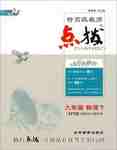题目内容
简答题(共3小题, 每小题2分, 满分6分)
阅读下面短文, 根据第73至第75小题的具体要求, 简要回答问题, 并将答案转写到答题卡上.
Every January, Breckenridge hosts the International Snow Sculpture Championships. Fourteen teams travel from all over the world to Switzerland to compete. Teams sculpt for sixty-five hours over five days. Each team hopes that when the time is up, its sculpture will be judged the best.
As the championship begins, the fourteen teams are faced with huge blocks of snow that weigh twenty tons each. The sculptors bring out their favorite tools that work best on the hard iced snow, but they are not allowed to employ tools that use electricity.
Most teams are inspired by what they have seen in daily life. For example, one team carved a teapot with tea pouring out. Another team sculpted a little cat on its hind feet(后脚)reaching into a fish bowl complete with water ripples(涟漪) and a crab(螃蟹) trying to attack the cat. In 2006, Team USA sculpted a golden dog looking at its image reflected in a mirror. To create the effect that the little dog saw its reflection in the glass, the artists carved two dogs facing each other with their paws(脚爪)touching.
As the final hours of the competition tick by, exhausted team members add last-minute detail. They use small brooms to brush off snow caught in tiny holes. One team member counts down the last five minutes while others are busy cleaning up the tools. If they leave any tools behind, they will be out. When the whistle bows, everyone must step away from the sculpture. The judges then vote on creativity, technical skills, and visual impact (视觉效果)of the designs.
In 200, Team USA took first place for their golden dog sculpture titled “Discovery”. But the competition is not just about medals and ribbons. “It’s not about the prize,” said Rob Neyland, Team USA’s captain. “It’s about touching the audience. ”
Every year, as the championship ends, each team is already dreaming of the next masterpiece it will design.
What kind of tools are the sculptors Not permitted to use?(回答词数不超过6个)
What gives the sculptors ideas for their creative work? (回答词数不超过9个)
Why did Team USA win the competition in 2006? (回答词数不超过15个)
73.The tools that use electricity.
74.The things they have seen in daily life.
75.Because its sculpture was judged the best for creativity, technical skills and visual impact.
解析:
本文是一片记叙文,讲述的是:国际冰雕比赛。
【小题1】根据第二段的“The sculptors bring out their favorite tools that work best on the hard iced snow, but they are not allowed to employ tools that use electricity”可以得出答案:需要用电的工具。
【小题2】 根据第三段的“Most teams are inspired by what they have seen in daily life.”可以得出答案:日常生活中他们看到的事物。
【小题3】 根据第四段的“The judges then vote on creativity, technical skills, and visual impact (视觉效果)of the designs.”可以得出答案:他们的作品是创造性、技术性和视觉效果最佳的。
阅读简答是湖南的特色题,根据文章或自己的判断简要回答问题。

 特高级教师点拨系列答案
特高级教师点拨系列答案